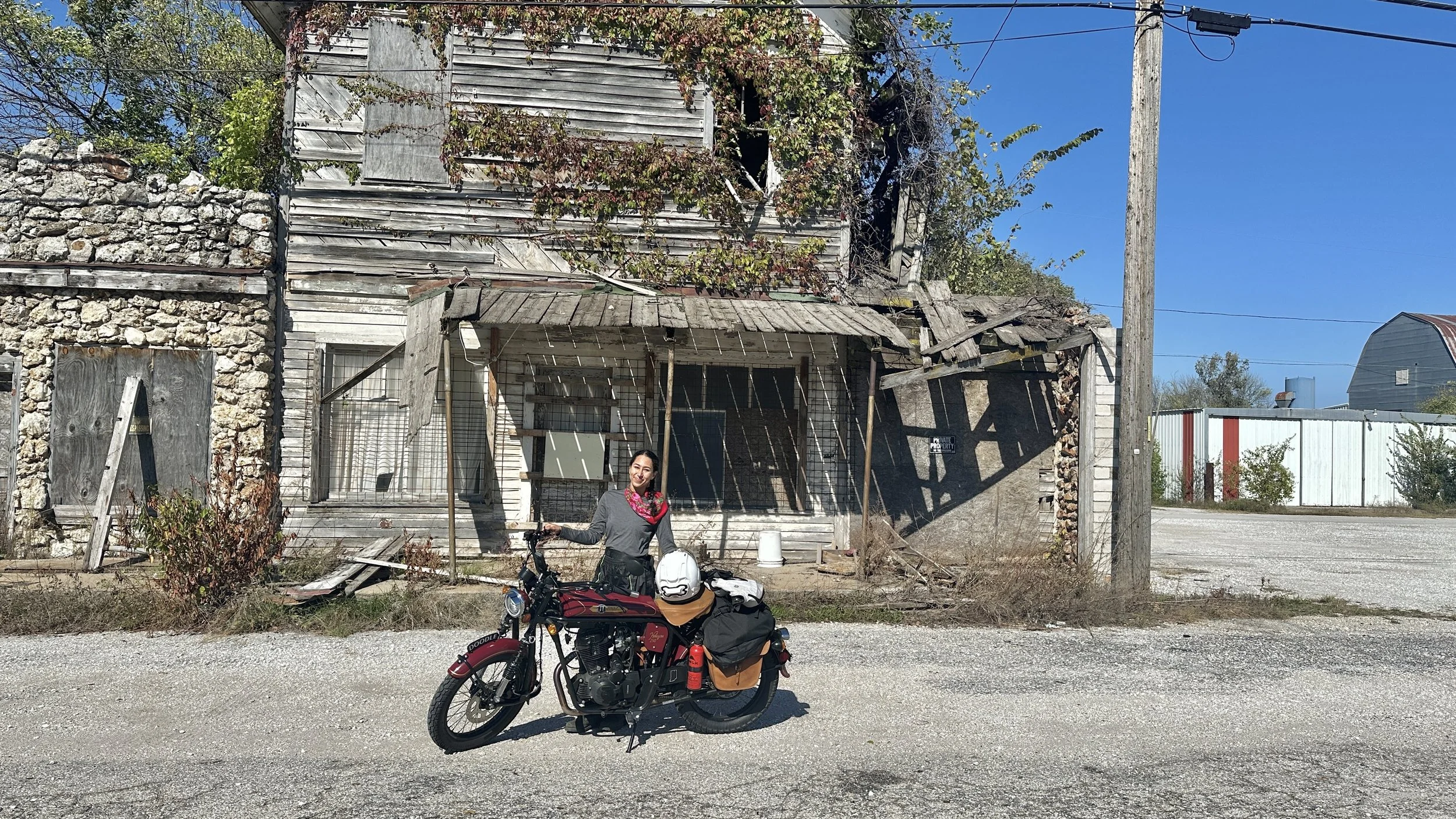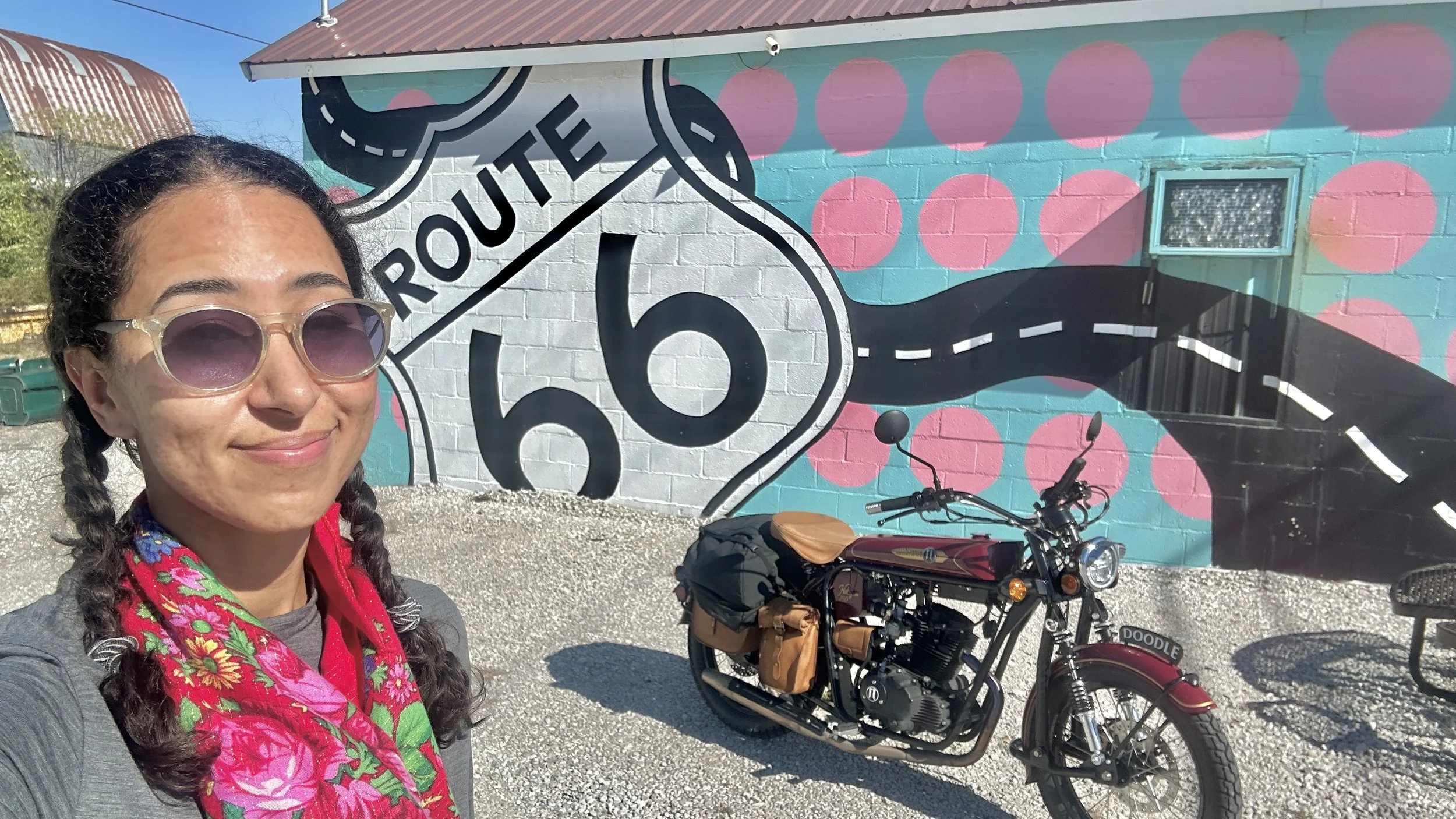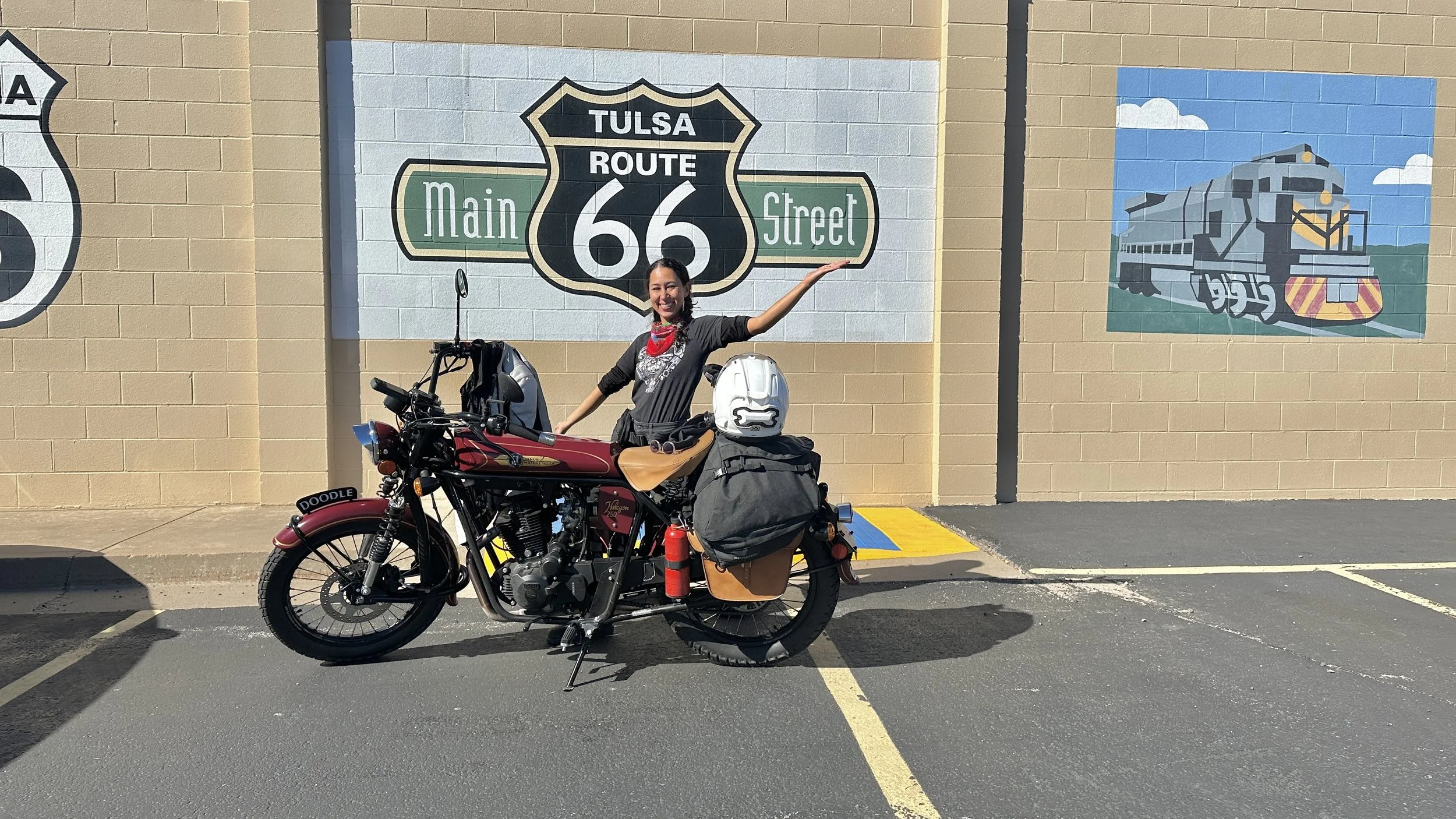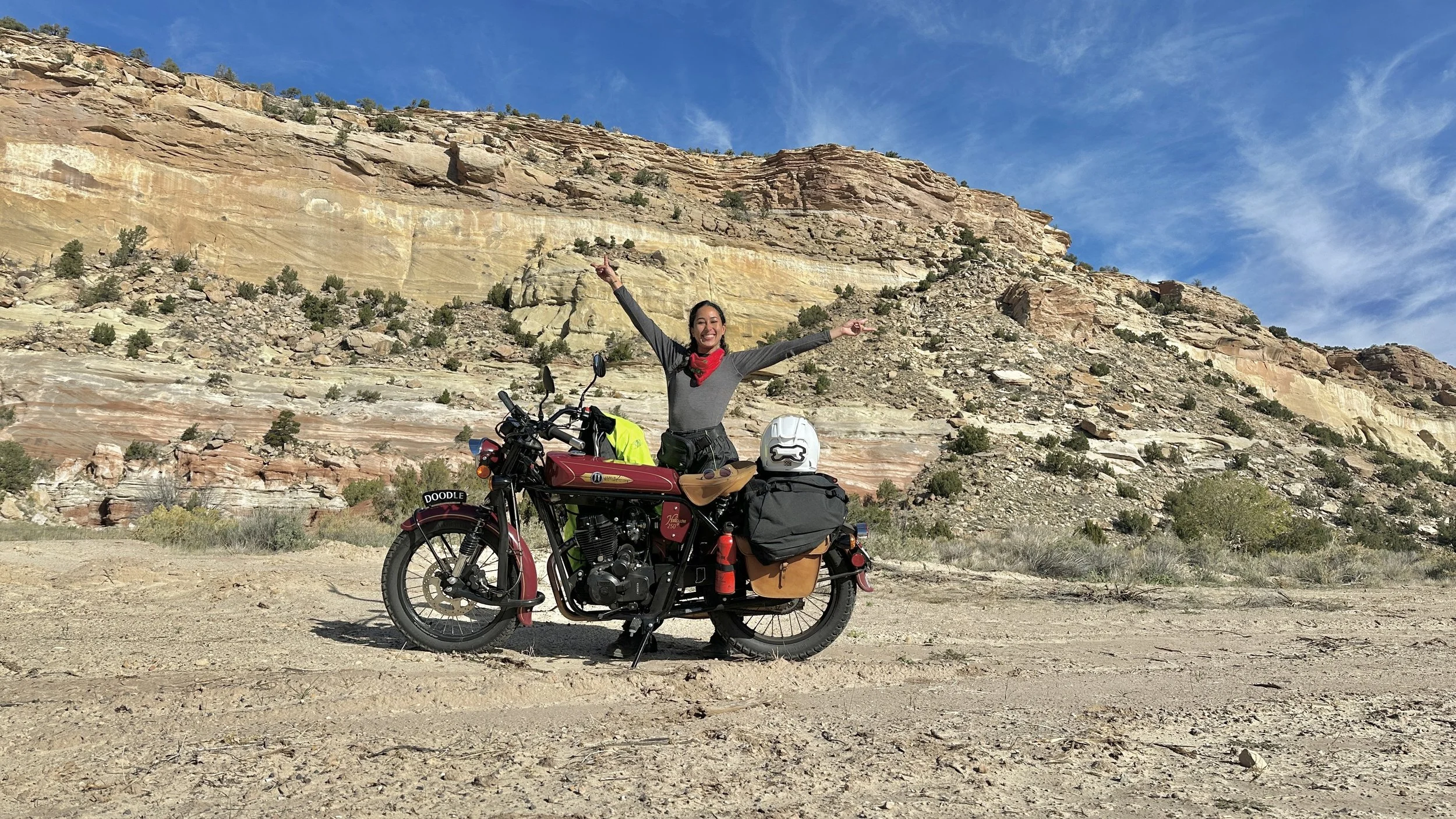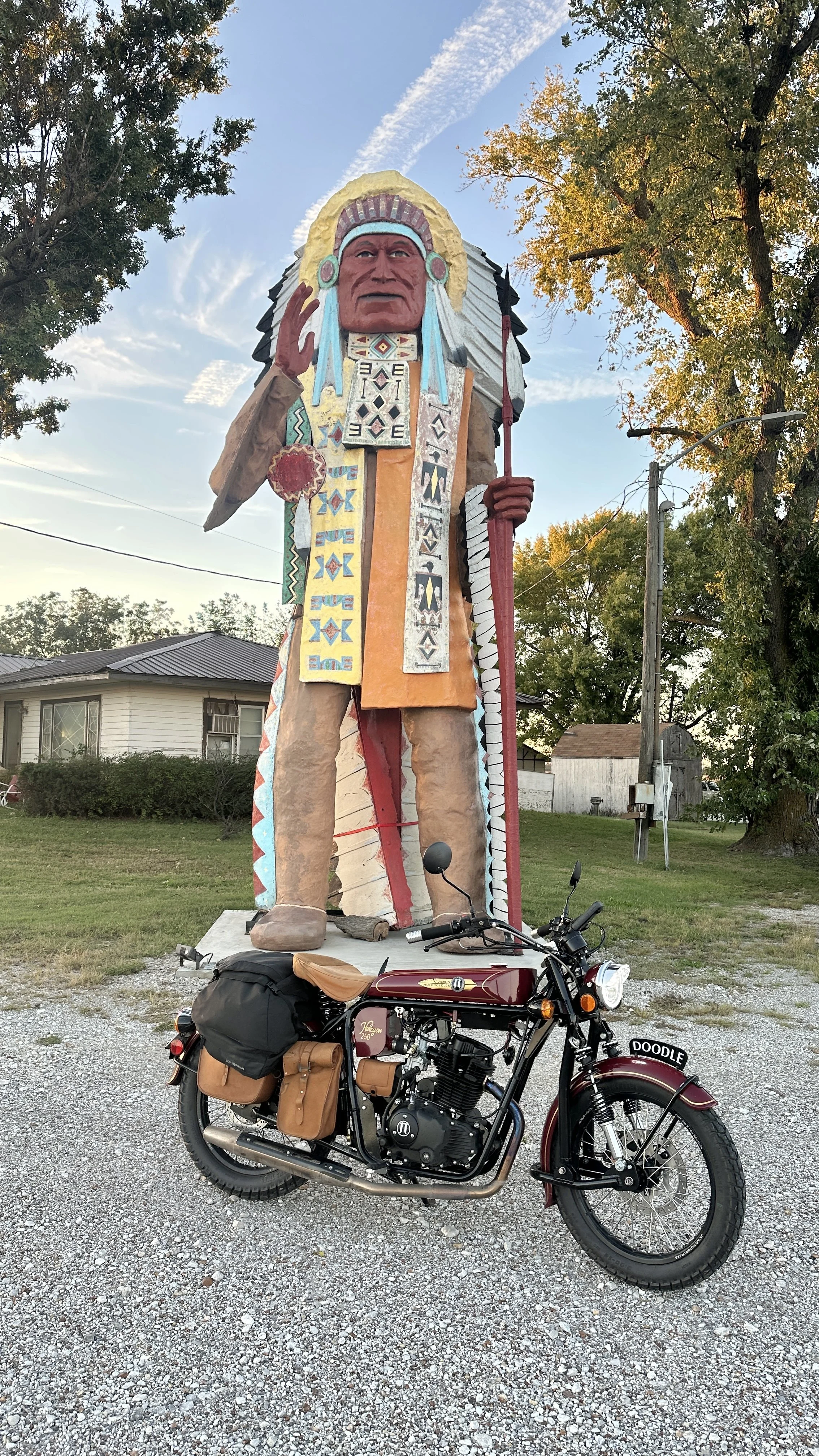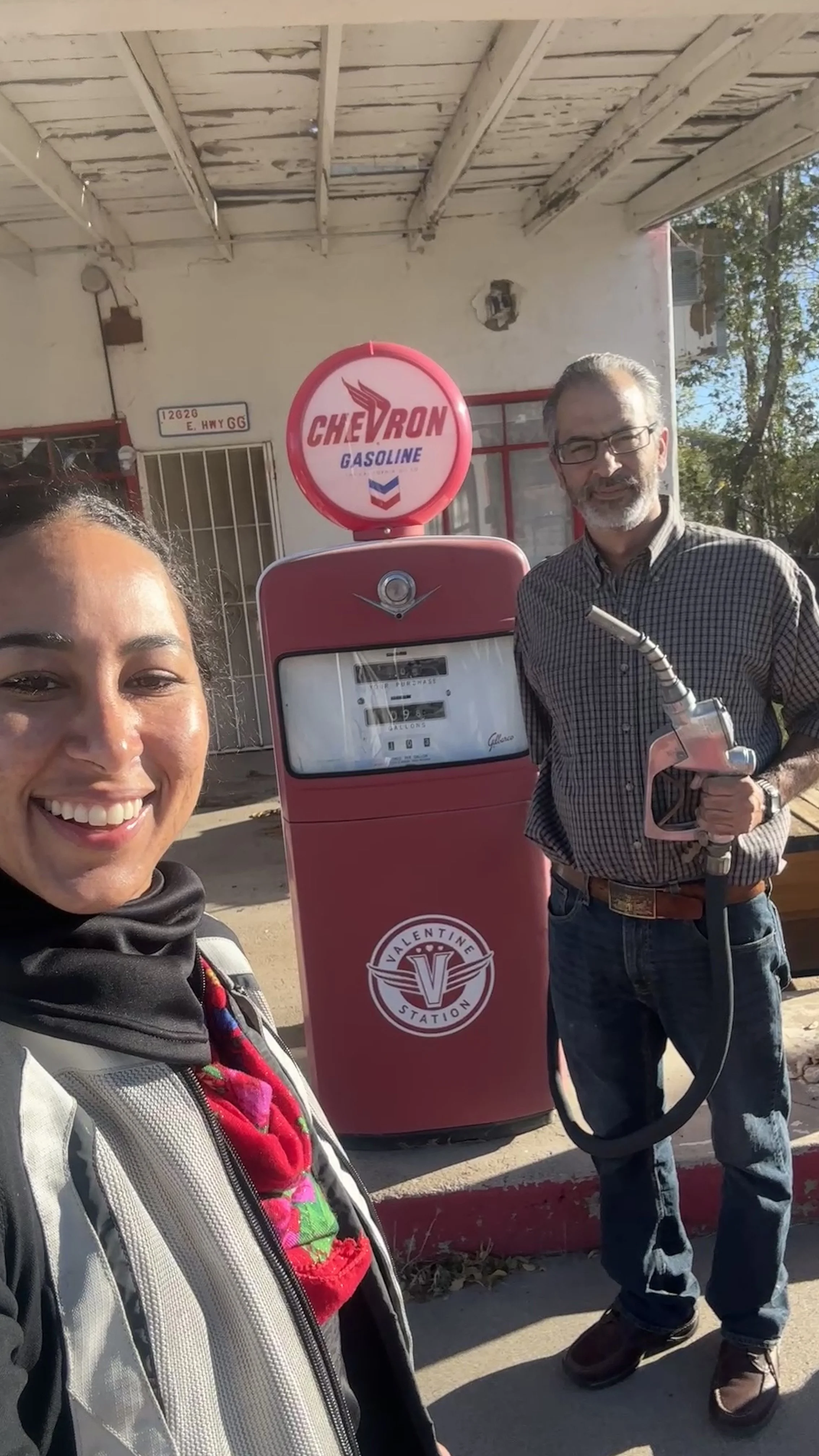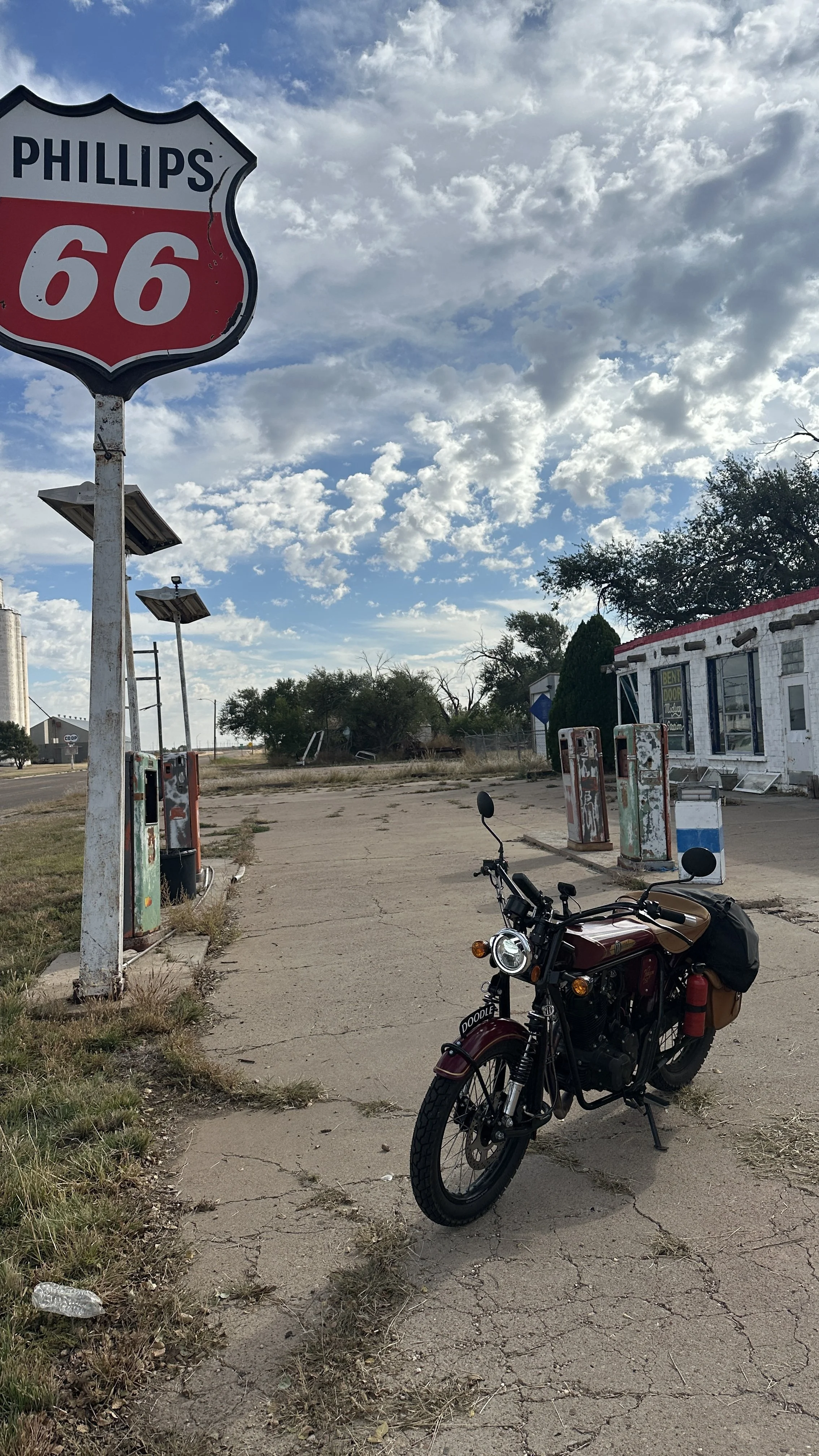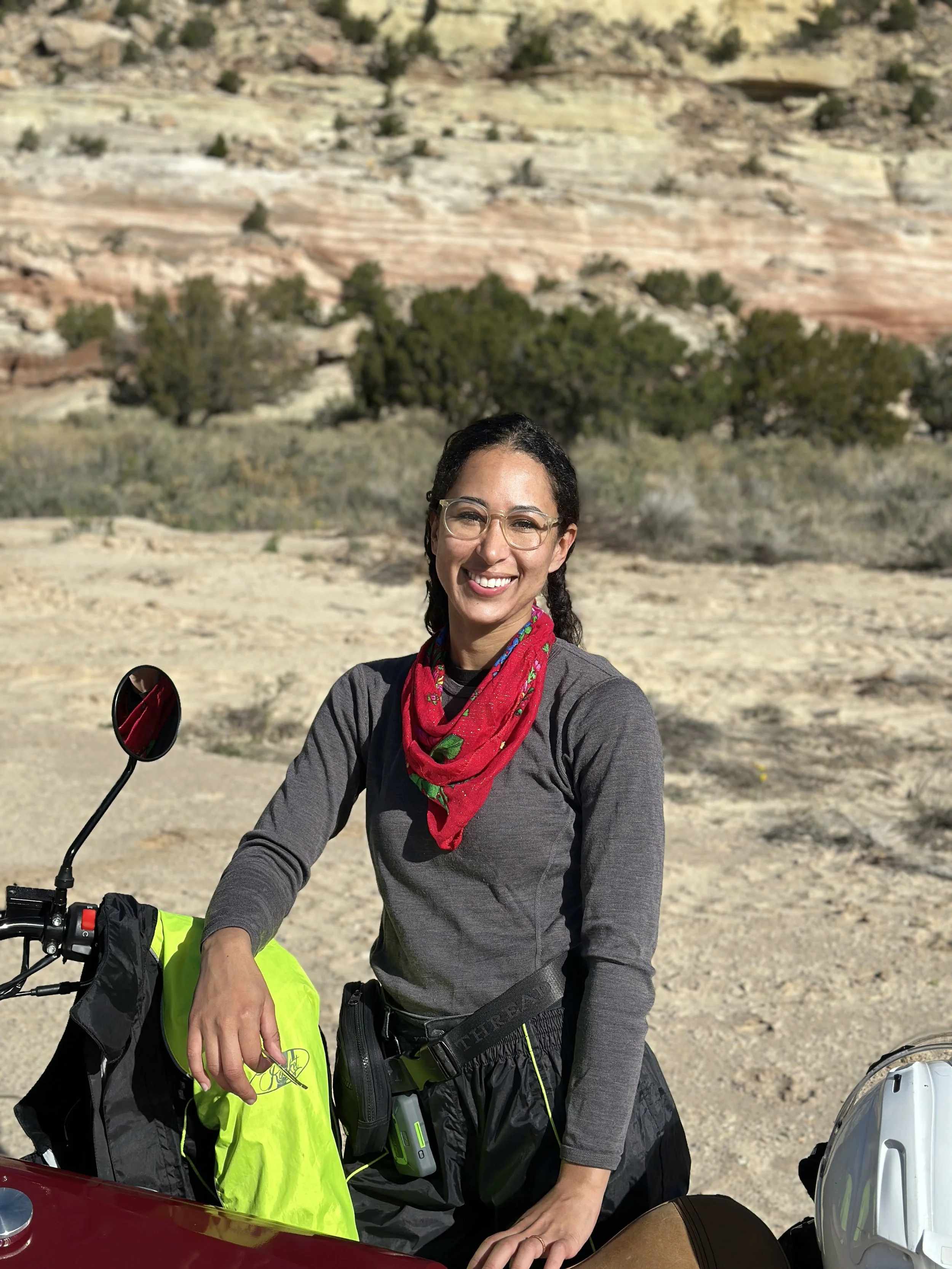Riding Route 66 on a 250cc Motorcycle: What I Learned Crossing USA the Slow Way
Somewhere off Route66 in Illinois
Route 66 is one of the most legendary roads in America — but it’s also one of the most misunderstood. People imagine neon signs, chrome diners, and endless desert highways. And while all of that is still out there, what surprised me most was everything in between: the forgotten towns, the broken pavement, the empty miles, and the way the road quietly challenges you the longer you stay on it.
From October 16-29, 2025, I rode the entire 2,488 miles of Route 66 from Chicago to Santa Monica on a one-cylinder, 250cc motorcycle I had previously crashed — a bike with no rear suspension, minimal modern features, and more personality than horsepower. It took me 14 days, averaging around 200 miles per day.
Here’s everything I wish I had known before I set out.
Why Route 66 Still Matters — and Why It’s Not What You Expect
Route 66 is often called The Mother Road because it carried millions of Americans west during the Dust Bowl and post-war era. Today, only 85% of the original road remains, and much of it is fragmented, cracked, or bypassed entirely by interstates.
This is what makes Route 66 special, and challenging, for motorcyclists:
Expect road conditions to change constantly. Fresh asphalt might turn into teeth-rattling concrete, then into loose gravel, then into a ribbed, milled surface the next mile.
Ghost towns are real. Once-thriving communities now have populations in the single digits.
Historic pieces are scattered. Route 66 isn’t one continuous road anymore; it’s a mosaic, and you’re stitching it together as you ride.
It’s slower, quieter, and lonelier than you think. And that’s exactly why it’s unforgettable.
By Lottie’s Soda Shop in Reeds, MO #Route66
Why I Chose a 250cc Motorcycle (and Why That Made the Ride that much more interesting)
Most people assume you need a big touring bike to cross the country. So did I. I’ve ridden over 30 bikes in my 10 years as a video creator in motorcycle space - almost all have been large cc with all the modern features. I really didn’t think I could ride a small cc bike long distance. Anytime I think, “I can’t…” I also think, “Challenge Accepted.” The thing about long distance trips is if you’re afraid of or even dislike a bike when starting out, you end up loving that bike in the end, even with all its quirks. Here’s what made me fall in love with that obnoxiously uncomfortable, 1 cylinder hardtail over 2,500 miles:
1. Slow bikes force you to see the real Route 66
At 55–60 mph, you don’t blow past the roadside motels, neon signs, original pavement, or the small towns with a population of 12.
2. Small bikes make the road feel big
You feel every incline, crosswind, and texture shift. It turns the ride into a skill-based adventure, not a cruise.
3. You meet more people
When people see you crossing America on a 250, they want to talk to you. I got more conversations, offers for help, and roadside chats on this trip than any other ride I’ve ever done.
The Hardest Parts of Riding Route 66
Some challenges surprised me — and some didn’t.
By Lottie’s Soda Shop in Reeds, MO #Route66
1. The road conditions
I hit:
deep ruts
broken pavement
milled roads
potholes the size of hubcaps
unpredictable elevation changes
At 60 mph, a bad pothole can feel like someone kicked your front wheel sideways.
2. Crosswinds
Especially through Oklahoma, Texas, and New Mexico.
Crosswinds on a lightweight bike are no joke — I spent hours leaned 10–15 degrees into the wind just to stay straight, swaying in my lane. ChatGPT told me that was reasonable unless I was swaying across lanes, so I kept going.
3. Fatigue
Route 66 isn’t hard because of speed — it’s hard because it demands constant attention. You’re rarely zoning out on highway miles. You’re navigating surface changes every few seconds, people in towns, and animals in the more desolate areas.
4. The mental game
Riding solo that long, that slowly, on unpredictable terrain forces you into your own thoughts more than you expect. Somewhere around the middle — not the end — is where the real growth happens.
The Best Parts of Riding Route 66
There are moments on Route 66 that feel like stepping into a postcard.
Tulsa, OK off Route 66
1. The small towns
Places like:
Pontiac, IL
Shamrock, TX
Seligman, AZ
Tucumcari, NM
These towns embrace Route 66 with murals, diners, restored gas stations, and genuine pride.
Somewhere off Route 66, just before the TeePee Trading Post in Apache County, Arizona
2. The changing landscapes
You go from:
Midwest farmland
to red dirt plains
to high desert mesas
to Arizona canyons
to the Pacific Coast
Every state feels like its own world.
3. The silence
There are stretches where you don’t see a single car for miles.
It feels like time stops.
At the Western Motel in Vinita, Oklahoma. Although today this might be considered offensive, back then, there was a fascination with the West, Cowboys, and Native American culture and using it in art and decor.
4. The people
From mechanics, to motel owners, to solo travelers — Route 66 attracts some of the most interesting personalities you’ll ever meet.
It’s Valentine from the Valentine Station YouTube channel! He lives off Route 66 in a gas station he converted into his home, check out his tour here.
Tips for Riding Route 66 on Any Motorcycle
Here’s what I learned:
1. Smaller bikes are absolutely capable
Just go slower, plan shorter days, and enjoy the ride. Granted, there are stretches on Route 66 that have a speed limit of 75 mph, and people were going 90+mph - so that wasn’t ideal on a bike I only ever topped out at 61 mph, but didn’t want to go faster than 55-58 mph.
2. Don’t rely on Google Maps
Use Route 66 apps, guidebooks, and GPX files. Google will constantly dump you onto the interstate.
3. Watch your fuel
There are places where the next gas station is 65–90 miles away. My tank could go up to 122 miles before running dry, and I was okay. I filled up every 70-90 miles just to be safe.
World's Tallest Gas Pump was meant to be a symbolic 66 feet tall, but ended up slightly taller. This is the entrance to the Heart of Route 66 Auto Museum in Sapulpa, Oklahoma
4. Gear matters
Especially:
a good helmet
wind protection
hydration system
layers for temperature swings - especially around Arizona and New Mexico, some towns are at elevation and will be MUCH colder than the rest of the ride. I needed heated gear in the mornings and used my rain suit to help break the wind for extra chilly days. But some days I was warm, and in California there was an abnormally hot day of 90F - of course that had to be the day I was in LA traffic going 10 mph.
5. Build in “discovery time”
The best parts of Route 66 aren’t planned. They happen when you stop because something caught your eye. I didn’t plan a single stop or hotel or anything. The only thing I regret is not taking a photo at the halfway point.
"Bent Door Gas Station" is located on Route 66 in Adrian, Texas, at the official "Midpoint" of the highway. It's actually the Bent Door Trading Post, which was a gas station built in 1947, saved from demolition in 1995, and is currently undergoing restoration and cared for by local residents.
Is Route 66 Worth Riding Today?
Yes — but not because it’s glamorous or shiny or fast.
Route 66 is worth riding because:
it’s raw
it’s imperfect
it’s historical
it forces you to slow down
it challenges your riding skills
it connects you with people and places you’d never find otherwise
If you want to feel what cross-country travel used to be like before interstates…
if you want to understand the soul of old Americana…
if you want a ride that transforms you more than entertains you…
Then Route 66 is absolutely worth it.
Final Thoughts: What Route 66 Taught Me
Somewhere around the middle of the trip — not the end — I realized the real lesson wasn’t about finishing.
It wasn’t even about distance or speed.
It was about learning how to ride through discomfort, uncertainty, and long stretches of quiet.
It was about riding a bike I once crashed and learning to trust it again.
It was about rediscovering why I fell in love with motorcycles in the first place.
Route 66 isn’t the easiest road.
But it might be the most honest one.
Watch the full, hour long YouTube video on the road trip below


